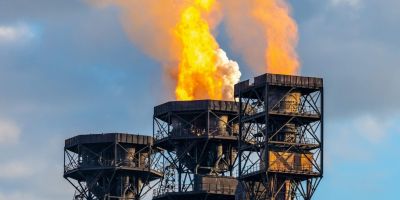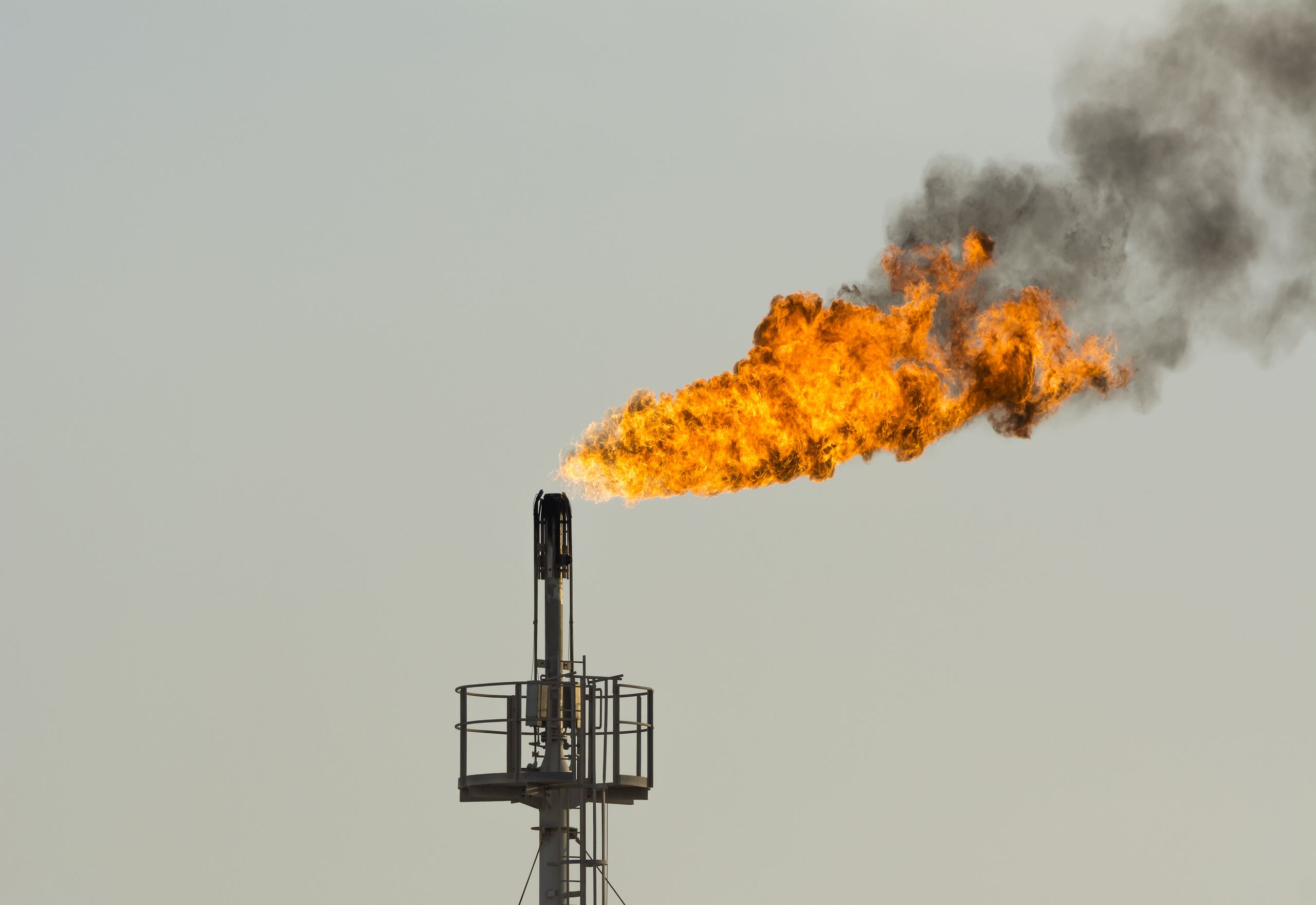Flare Gas Monitoring
ANALYTICAL SOLUTIONS FOR FLARE GAS MONITORING
Innovative Instrumentation, Flare Gas Analysis and Process Control Solutions for Flare Gas Monitoring
Process Insights is your SINGLE SOURCE for complete flare gas analysis for total compliance – Quad O, HON, MON and EMACT, RSR, Subpart Ja, HRVOC and more.
The EPA introduced the new Emissions Guidelines in December 2023, outlining procedures for states to formulate plans to restrict methane emissions from existing sources. Acknowledging the critical role of oil and natural gas operations as the most significant industrial source of methane pollution in the U.S., this initiative represents a pivotal step toward a cleaner and more sustainable future. Read the new EPA guidelines regarding Quad O https://ow.ly/YG1850QguNJ
New regulations pertaining to flare emissions now mandate oil refineries and chemical plants to analyze vent gases and promptly make adjustments to maintain adequate destruction efficiency. We can assist you in meeting these emissions regulations effectively. As per the updated requirements outlined in the General Provisions, flares utilized as Air Pollution Control Devices (APCD) are expected to achieve a 98% destruction efficiency for Hazardous Air Pollutants (HAPs). These updated requirements encompass monitoring the pilot flame, visible emissions, flare tip velocity, net heating values, dilution parameters, and the implementation of a Flare Management Plan and a Continuous Parameter Monitoring System Plan.
We know midstream applications. We will work to match your needs and budget and provide the optimal, and most stable process analysis solution for your application. We’re here to help. Contact us today.
-

Flare Gas Monitoring
On December 2, 2023, the U.S. Environmental Protection Agency (EPA) revealed its conclusive regulation aimed at significantly slashing methane and air pollution emissions originating from oil and natural gas operations. This comprehensive final measure, spanning over 1,600 pages, encompasses enhanced and updated standards for methane and other air pollutants from new, modified, and reconstructed sources. Additionally, it provides emissions guidelines to aid states in formulating plans aimed at curbing methane emissions from existing sources. Download the EPA Fact Sheet
For complete flare gas monitoring for compliance with regulations, our solutions include: Download Solutions for Flare Gas Flyer_v24
- Total Sulfur Excimer UV Gas Analyzers FGA-1000™ Flare Gas Analyzer
- Injection Style Calorimeter for Zero-Hydrocarbon Emissions for BTU and Flare Control 9800 CXi ™ Calorimeter
- Real-Time Mass Spectrometers for Compliance and Flare Control MAX300-RTG™ 2.0
DOWNLOAD Solutions for Flare Gas Flyer
DOWNLOAD Solutions for Refinery Flyer
-

Excimer UV Technology Total Sulfur Analyzer
The ATOM INSTRUMENT™ FGA-1000 Process Analyzer with UV Fluorescence Technology is a highly specialized instrument designed for Flare Gas Analysis. It offers several benefits over traditional methods including:
- High sensitivity and selectivity: Uses advanced technology to accurately and precisely measure the concentration of different gases in the flare stack, even at very low concentrations. This means that it can detect even small changes in gas composition and provide highly accurate results.
- Real-time monitoring: Designed for real-time monitoring, which means that it can quickly provide information on the gas composition and flow rate in the flare stack. This is essential for ensuring compliance with environmental regulations and identifying potential safety hazards.
- Wide range of gas detection: Can detect a wide range of gases, including hydrocarbons, hydrogen sulfide, and carbon monoxide, which are commonly found in flare gas streams. This makes it a versatile tool for analyzing different types of flare gas and identifying potential issues.
- Non-invasive measurement: Uses a non-invasive measurement technique that does not require any sampling or preparation of the flare gas. This means that it can provide accurate results without disturbing the flare stack operation, which is important for maintaining safety and avoiding downtime.
The FGA-1000 continuous process analyzer is a device used to analyze the composition and properties of flare gas emissions in various industries, including chemical and petrochemical plants. It is a continuous process analyzer that operates in real-time, providing continuous analysis of the flare gas emissions. The device is designed to operate in hazardous and harsh environments and can withstand extreme temperatures, pressures, and humidity.
-

quadrupole mass spectrometer
The EXTREL™ MAX300-RTG 2.0 Process Mass Spectrometer is a highly specialized instrument designed for the analysis of flare gas streams. It offers several benefits over traditional methods of flare gas analysis, including:
- High sensitivity and selectivity: Uses advanced technology to accurately and precisely measure the concentration of different gases in the flare gas stream, even at very low concentrations. This means that it can detect even small changes in gas composition and provide highly accurate results.
- Real-time monitoring: Designed for real-time monitoring, which means that it can quickly provide information on the gas composition and flow rate in the flare gas stream. This is essential for ensuring compliance with environmental regulations and identifying potential safety hazards.
- Wide range of gas detection: Can detect a wide range of gases, including hydrocarbons, hydrogen sulfide, and carbon monoxide, which are commonly found in flare gas streams. This makes it a versatile tool for analyzing different types of flare gas and identifying potential issues.
- Robust and reliable: Designed for use in harsh industrial environments and is built to withstand the demands of continuous operation. It is also easy to maintain and calibrate, which ensures reliable and accurate performance over time.
The MAX300-RTG 2.0 Process Mass Spectrometer is a device used for the analysis of flare gas emissions in various industrial applications, including chemical and petrochemical plants. The mass spectrometer can detect and measure a wide range of components, from light gases, such as hydrogen and helium, to heavier hydrocarbons, such as benzene and toluene.
-

injection style zero emissions calorimeter
Using our COSA XENTUAR™ 9800CXi™ injection-style zero emissions calorimeter in flare gas analysis offers several benefits:
- Accuracy: This type of calorimeter offers highly accurate measurements of the heat content of the flare gas, which is crucial for compliance with environmental regulations.
- Safety: An injection-style zero emissions calorimeter does not require any sample handling or disposal, which eliminates the potential safety hazards associated with handling combustible or hazardous materials.
- Cost savings: This type of calorimeter has a low total cost of ownership as it requires minimal maintenance and does not require any consumables or calibration gases.
- Environmentally friendly: As the name suggests, zero emissions calorimeters do not produce any emissions or waste, which is beneficial for the environment.
- Time savings: Injection-style zero emissions calorimeters have a fast response time, which enables real-time monitoring of the flare gas composition, allowing for rapid identification and correction of any issues that may arise
The 9800CXi injection-style zero emissions calorimeter is a device used to measure the heat content (BTU) of flare gas emissions in various industries, including chemical and petrochemical plants. The device operates on the principle of a gas being injected into a combustion chamber where it is burned completely. The heat released during combustion is transferred to a fluid flowing through a coil in the combustion chamber. The temperature of the fluid is then measured to calculate the heat content of the gas.
The 9800CXi injection-style zero emissions calorimeter uses a unique injection-style design, which eliminates the need for any sample handling or disposal, making it a zero-emissions device. The device operates continuously and can take measurements every two minutes, providing real-time analysis of the flare gas.
-

EMACT REQUIREMENTS
The EPA has recently introduced more stringent environmental regulations on flare emissions, which include the Ethylene MACT (EMACT) and Miscellaneous Organic Chemical Manufacturing NESHAP (MON) regulations. These regulations aim to reduce flare emissions from chemical and petrochemical plants, with the compliance deadline for many plants set for mid-2023. One of the crucial requirements of these regulations is to ensure that any organics in the flare gas undergo sufficient combustion. This necessitates the confirmation of a minimum BTU in the gas being burned by the flare, but measuring the BTU can be challenging due to the dynamic range of components involved.
The aim of these regulations is to decrease flare emissions in numerous chemical and petrochemical plants, and many plants must comply with them by mid-2023. A significant aspect of these regulations is to guarantee that there is adequate combustion of organics in the flare gas. Hence, a crucial compliance criterion for the affected flares is to verify that the gas being burned by the flare contains a minimum BTU. However, accurately and swiftly measuring the BTU can be challenging due to the wide range of components involved.
Our solutions include:
- Total Sulfur Gas Analyzers ATOM INSTRUMENT™ FGA-1000™
- Injection Style Calorimeter for Zero-Hydrocarbon Emissions for BTU and Flare Control COSA XENTAUR™ 9800 CXi ™ Injection Style Calorimeter
- Real-Time Mass Spectrometers for Compliance and Flare Control EXTREL™ MAX300-RTG™ 2.0
WHY YOU SHOULD USE OUR GAS ANALYSIS SOLUTIONS

Accurate measurement
Flare gas monitoring requires accurate measurement of the flow rate and composition of the gas being flared. However, the high temperature and pressure of the gas can make accurate measurement challenging, as can the variability in the gas flow and composition.

Reliable Operation You Can Trust
Flare gas monitoring equipment must be able to operate in a range of environmental conditions, including extreme temperatures, high winds, and heavy rain. This can be challenging, especially in remote locations where access to power and other infrastructure may be limited.

Meet Regulatory compliance
Flare gas monitoring is subject to regulatory requirements in many jurisdictions, and companies must be able to demonstrate compliance with these requirements through regular monitoring and reporting. This can be challenging due to the complexity of the regulations and the need for accurate data and reporting systems.

Avoid Fines
Non-compliant companies may face fines or penalties that can be significant, especially for repeated or willful violations of regulations.

reduce Shutdowns
Regulators may require a company to shut down operations if they are found to be in violation of flare gas regulations. This can result in significant financial losses and reputational damage.

Avoid Reputational damage
Companies that are found to be non-compliant with flare gas regulations may face negative publicity and reputational damage, which can have long-term impacts on their business.






